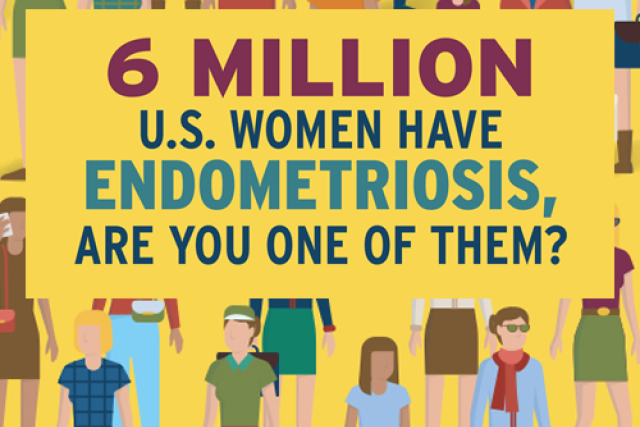Endometriosis is a disorder where the tissue that makes up the uterine lining grows outside the uterus. One in 10 women are affected by endometriosis — that’s more than 6 million women in the United States. Women with pelvic pain and infertility issues have a higher incidence of endometriosis.
Endometriosis symptoms
Some women with endometriosis may not have any symptoms. Others may have symptoms that lower their quality of life, such as:
- Heavy menstrual bleeding
- Pelvic pain before and during menstrual periods
- Painful intercourse
- Pain with bowel movements or urination during menstrual periods
Infertility, while not a sign of endometriosis, may be related to endometriosis: Nearly 40% of women with infertility have endometriosis. The scar tissue from endometriosis can damage the egg or sperm or interfere with their movement through the reproductive tract.
If your provider suspects endometriosis is causing your symptoms, they will perform a history and physical exam. Additional procedures may be needed, including:
- Ultrasound: Doctors use sound waves to visualize cysts caused by endometriosis in the ovaries. Advanced endometriosis is more challenging to identify with ultrasound.
- MRI: Your provider may rely on magnetic resonance imaging to get more information after an ultrasound or to prepare for surgical removal of endometrial tissue.
- Surgery: The only reliable method of confirming endometriosis is through direct visual identification during surgery. Once an endometrial lesion is removed and tested under the microscope, the diagnosis of endometriosis is confirmed. However, doctors only perform surgery when all other medical treatments aren’t successful.
Treatment of Endometriosis
Your provider can offer several treatment options, starting with the least invasive approach. If you don’t find relief with one method, they will try a different approach until the symptoms improve. Your treatments may include:
Medical management
Since endometriosis is a chronic disease, ongoing treatment is necessary. However, not all cases of endometriosis are progressive. Medicines suppress, rather than cure, endometriosis. Medical management — delivered orally or via injection, implant or intrauterine device — may include:
- Non-steroidal anti-inflammatory drugs (NSAIDs): The first line of treatment for endometriosis is medication to treat pain, such as ibuprofen or naproxen.
- Hormonal birth control methods: The use of hormonal contraceptives (birth control pills, birth control patch or vaginal rings) slows the growth of endometrial lesions. This treatment works because oral contraceptives suppress the ovarian hormones that cause the endometrial lining to build up. Oral contraceptives can be combined with NSAIDs to decrease inflammation and relieve pain.
- Progestin therapy: Long-term therapy with the hormone progestin, which thins the lining of the uterus to stop periods, also inhibits endometrial lesions.
- GnRH agonists: GnRH agonists and antagonists are synthetic blockers of gonadotropin-releasing hormone, which regulates the menstrual cycle. Injections of GnRH agonists or pills of GnRH antagonists work to deprive the endometrial lesions of varying amounts of estrogen, causing them to deteriorate.
Surgical management
If medical management is not successful, surgery may be necessary. Typically, your surgeon will cut or burn away endometrial lesions during laparoscopic surgery (most commonly using small incisions and advanced tools). Advanced endometriosis may require a larger incision.
Surgery is a last-resort option that usually happens when you are done having children. For an operation to be curative, your doctor may suggest the removal of the uterus and ovaries. After surgery, your doctor may recommend you incorporate medical management to help prevent the development of new lesions or the growth of remaining lesions.
Investigational therapies
Researchers continue to investigate new treatments for endometriosis. They have seen potential with:
- SPRMs: Selective progesterone receptor modulators that suppress the menstrual cycle and endometrial growth.
- Aromatase inhibitors: These drugs, which are normally used to treat or prevent breast cancer, stop the production of estrogen. Though not approved by the U.S. Food and Drug Administration for the treatment of endometriosis, some providers use them to suppress endometrial growth in women who have not had relief with other medications.
